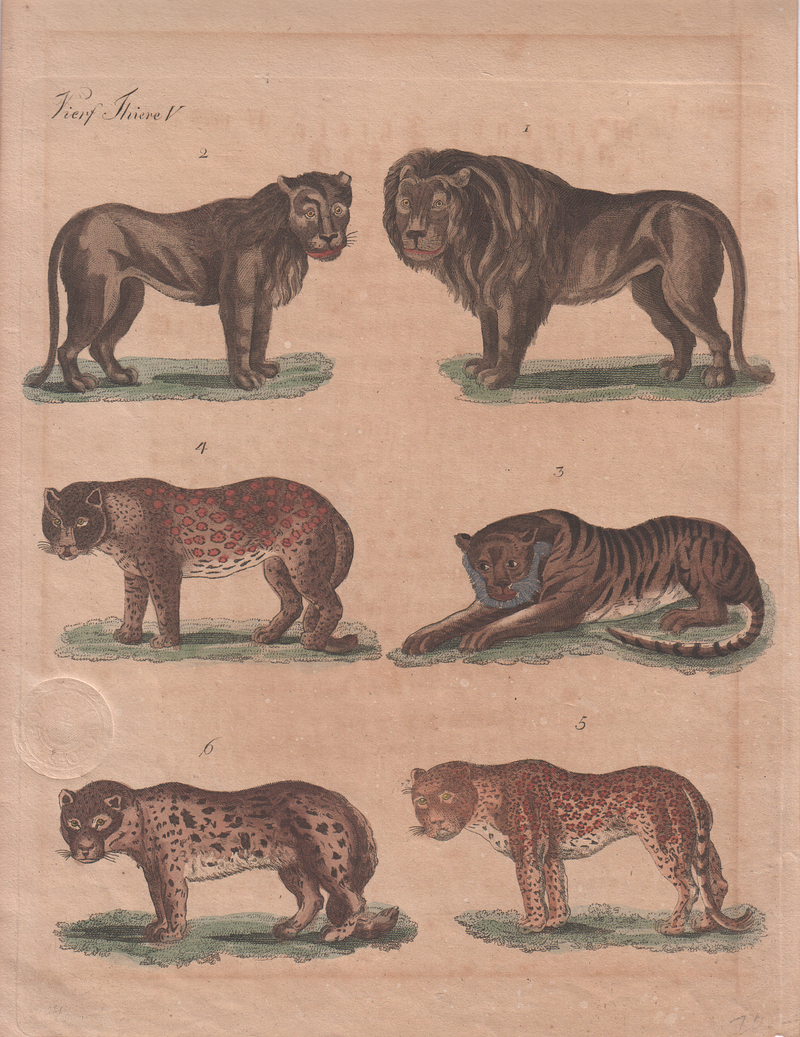|
| Query: Leopard | Result: 1346th of 1434 | |
lion (Panthera leo), tiger (Panthera tigris), leopard (Panthera pardus), jaguar (Panthera onca)
| Subject: | lion (Panthera leo), tiger (Panthera tigris), leopard (Panthera pardus), jaguar (Panthera onca)
| | Poster: | Wiki Photos (---@---.---)
| |

| Resolution: 1440x1866
File Size: 4530335 Bytes
Upload Date: 2017:03:15 12:23:30
|
ERROR : Server Busy(-1105)
ERROR : Server Busy(-1105)
lion (Panthera leo), tiger (Panthera tigris), leopard (Panthera pardus), jaguar (Panthera onca)
Description
Deutsch: Kupferstich, altkoloriert. Vierf. Thiere. V. Herausgegeben und verlegt von Friedrich Justin Bertuch (1747-1822) im 12-bändigen „Bilderbuch für Kinder“, Weimar um 1800.
Date circa 1800
Source Collection Kuhn
Author Unknown
Source: https://commons.wikimedia.org/wiki/File:Friedrich_Justin_Bertuch,_Vierf._Thiere._V_(um_1800).jpg
The lion (Panthera leo) is one of the big cats in the genus Panthera and a member of the family Felidae. The commonly used term African lion collectively denotes the several subspecies in Africa. With some males exceeding 250 kg in weight, it is the second-largest living cat after the tiger. Wild lions currently exist in sub-Saharan Africa and in India (where an endangered remnant population resides in Gir Forest National Park).
The jaguar (Panthera onca) is a big cat which is the only extant Panthera species native to the Americas. The jaguar's present range extends from Southwestern United States and Mexico across much of Central America and south to Paraguay and northern Argentina. |
^o^
Animal Pictures Archive for smart phones
^o^
|
|